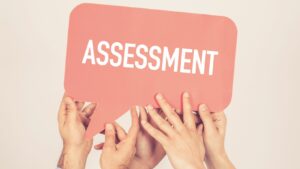Sammy will Paraphrase an Article for his Class. To Paraphrase Correctly, Sammy Must
One of the key benefits of paraphrasing is that it helps to enhance understanding. When you paraphrase a text, you are forced to engage with the content on a deeper level. You need to fully grasp the meaning of the original text and then reframe it in a way that makes sense to you. This process allows you to internalize the information and gain a better understanding of the topic at hand.
Paraphrasing also helps to break down complex ideas and concepts into simpler terms. By rephrasing the content in your own words, you are able to explain it in a way that is easily digestible for your readers. This is particularly useful when writing academic papers or articles that target a general audience. By paraphrasing complex ideas, you make them more accessible and increase the likelihood that your readers will comprehend and appreciate your work.
Avoids Plagiarism
Plagiarism is a serious offense in the academic and professional world. It involves using someone else’s words or ideas without giving them proper credit. Plagiarism not only undermines your credibility as a writer but it can also have legal consequences. Paraphrasing is an effective strategy to avoid plagiarism.
When you paraphrase, you take the ideas and information from a source and express them in your own words. This demonstrates that you have understood the content and are able to reproduce it without copying directly. By referencing the original source and acknowledging the author, you give credit where it is due and avoid any accusations of plagiarism.
Paraphrasing is an important skill that can greatly improve your writing. It enhances understanding by allowing you to engage deeply with the content and make it more accessible to your audience. Additionally, it helps you avoid plagiarism by presenting ideas in your own words and properly crediting the original source. By mastering the art of paraphrasing, you can take your writing to the next level and produce high-quality, original content.
Strategies for Effective Paraphrasing
To effectively paraphrase a piece of writing, the first step is to thoroughly read and understand the original text. I’ll start by analyzing the main points and key ideas presented in the content. By doing so, I gain a deeper understanding of the author’s intentions and the overall message they are trying to convey.
While reading, I pay close attention to any complex terminology or technical jargon used, as these can be challenging to paraphrase accurately. I make sure to grasp the context and meaning of these terms to ensure my paraphrasing is precise and clear.
Take Notes
Taking notes is an essential step in the paraphrasing process. As I read the original text, I jot down important ideas, keywords, and phrases that I plan to incorporate into my paraphrase. By doing this, I can reference my notes later when I’m crafting my own version of the content. These notes serve as a roadmap and guide me in structuring my paraphrased text effectively.
When taking notes, I avoid copying the original text verbatim. Instead, I focus on capturing the main ideas and relevant supporting details in my own words. This helps me in avoiding plagiarism and ensures that my paraphrase is unique and original.
Use Synonyms and Different Phrasing
One of the key strategies in effective paraphrasing is using synonyms and different phrasing. Instead of relying solely on the words and sentence structures used in the original text, I strive to express the ideas in my own language and style.
Using synonyms allows me to replace specific words with their equivalents, while still conveying the same meaning. This helps to avoid repetitive language and gives my paraphrase a fresh and unique perspective. Additionally, I experiment with different sentence structures and phrasing to present the content in a more concise and engaging manner.
Tips for Paraphrasing Successfully
When it comes to paraphrasing, there are a few key tips that can help ensure success. First and foremost, it’s crucial to thoroughly read and understand the original text. This means taking the time to grasp any complex terminology or technical jargon that may be present. By doing so, I can ensure that I have a solid understanding of the content before attempting to paraphrase it.
Another useful tip is to take notes while reading the original text. Jotting down key ideas, keywords, and phrases can be incredibly helpful when it comes time to reference them later. These notes serve as a guide, helping me stay focused on the main ideas and ensuring that I don’t miss any important details.



